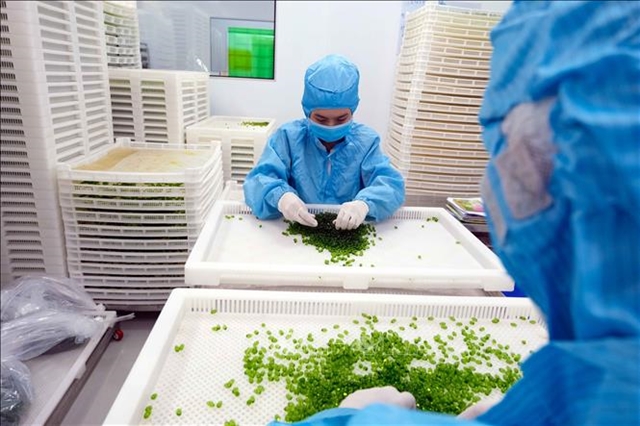Vietnam’s pharmaceutical sector has grown significantly in the last decade with positive changes in government policies and an increase in domestic regulations of imported drugs. Regulations on advertising and clinical trials can create obstacles for sellers looking to break into the market, but with the right information, Vietnam offers many opportunities for potential suppliers.
Over the past year, Vietnam’s pharmaceutical market has grown by 10 percent to US$5.2 billion and the growth momentum is projected to continue with the rising expectations of a better quality of life.
Local consumer trends
Product information
Around 80 percent of Vietnamese people buy their drugs from private pharmacies and self-medicate, and as individuals are often able to obtain drugs without a prescription, the most common sources of information for decision-making when buying drugs are relatives and friends.
Preference for brands known to consumers
When buying, people do consider the origin of the drug and often prefer imported drugs to their domestic counterparts. Non-original and fake drugs can often find their way into pharmacies and clinics, hence buyers value brands known to them and advice from people close to them.
Imports and Exports
In 2013, 95 percent of the drugs sold in Vietnam were imported, with France, India, and South Korea emerging as the top exporters to Vietnam. In 2017, France still held the lead with exports worth US$310 million, but Germany has moved from fourth to a close second, with exports worth US$292.1 million.
While most of the products are imported, Vietnam has started to produce more drugs domestically. In 2015, Vietnam produced around half of the country’s demand, but the products’ quality can be unreliable and the drugs are mostly exported to Laos and Cambodia, where the pharmaceutical market is less developed and not that competitive.
However, the government is making it difficult for many foreign companies to export drugs to Vietnam based on the country of origin of the drugs. This year, the exports from South Korea are taking a hit, as many of their products are not PIC/S GMP-certified (Pharmaceutical Inspection Co-operation Scheme Good Manufacturing Practice). This is in spite of the Vietnamese government moving South Korea from a grade 5 to 2 (on a five-point scale) in 2014, which should have made them more competitive in the Vietnamese market.
Vietnam’s bidding and grade system
It takes about five years for a drug to enter the Vietnamese market after it has been developed, beginning with two and a half years of clinical trials, and then another two and a half years to receive approval from the government.
Vietnam uses a grading system to divide companies into different groups that decide how much they can be involved in bidding; a grade of 1 provides the most freedom and 5 the least.
Grade 1:
- Countries that are part of the International Conference on Harmonization (ICH); or
- Pharmaceutical companies that are based in Australia; or
- Manufacturers certified by PIC/S GMP or EU GMP; or
- Manufacturers that have won the World Health Organization’s (WHO) GMP certification given by the Vietnamese government and sell their products to members of ICH.
Grade 2:
- Companies must be part of the European Union CMP or certified with GMP by PIC/S.
Grade 3:
- Pharmaceutical producers who have achieved WHO’s FMP awarded by the Vietnamese government.
Grade 4:
- The products must have gone through the bioequivalence
Grade 5:
- All other drugs.
Industry challenges
The major industry challenges are in three main areas:
- Advertising
- Clinical trial requirements
- The goal of domestic dependence by the Vietnamese government
Advertising of over the counter drugs is allowed in Vietnam, but advertising of prescription drugs is illegal. This could create problems for the public to find access to a drug. According to a study conducted by the EU-Vietnam Business Network (EVBN), 80 percent of individuals in Vietnam buy drugs from private pharmacies and self-medicate.
Another challenge that is a stumbling block for potential sellers in Vietnam is that the government requires all new drugs to go through registration and clinical trials in Vietnam before they can be sold to the public. EVBN claims that these trials have very little ability to actually judge the effectiveness of a drug, but creates a waiting period during which the drugs cannot be sold.
Finally, potential sellers should be aware of the Vietnamese government’s 10-year plan (started in 2013), which planned on investing around US$1.5 billion to boost the domestic Vietnamese pharmaceutical industry and reduce imports. Vietnam has decreased their reliance on imports, but not anywhere close to the projected target as decided in 2013 and while Vietnam has begun to produce more of their own products, they still import nearly 90 percent of the raw materials.
Market entry strategies
In spite all the barriers facing foreign producers, the best way to enter the market and become established in Vietnam is to find a local partner that has the ability to form connections with pharmaceutical distributors. Using this strategy, one can also eliminate some of the challenges faced with brand awareness due to the restrictions on advertising in Vietnam.
Finding a local company to start such a joint venture is an important first step to enter the market in Vietnam. Foreign companies often work with domestic ones, such as Diethelm Vietnam, Zuellig Pharma Vietnam, and Mega Lifesciences, to fill in different needs in the supply-chain. For example, in 2017 Zuellig Pharma Vietnam established a two-year agreement with the National Centre for Control of Vaccines and Biologicals and the National Institute of Hygiene and Epidemiology to train workers to keep constant cool temperatures during the manufacturing and storage of vaccines to help keep them effective.
Though Vietnam has implemented steps to reduce its dependence on imports and develop its domestic industry, most drugs are still imported, including raw material. Currently, China accounts for 57 percent of the raw material imports. This offers an opportunity for companies to become involved in the industry supply chains with the right market entry strategies.
By: http://www.vietnam-briefing.com/news/vietnams-growing-pharmaceutical-market.html/, dated 21Mar2022







Comments